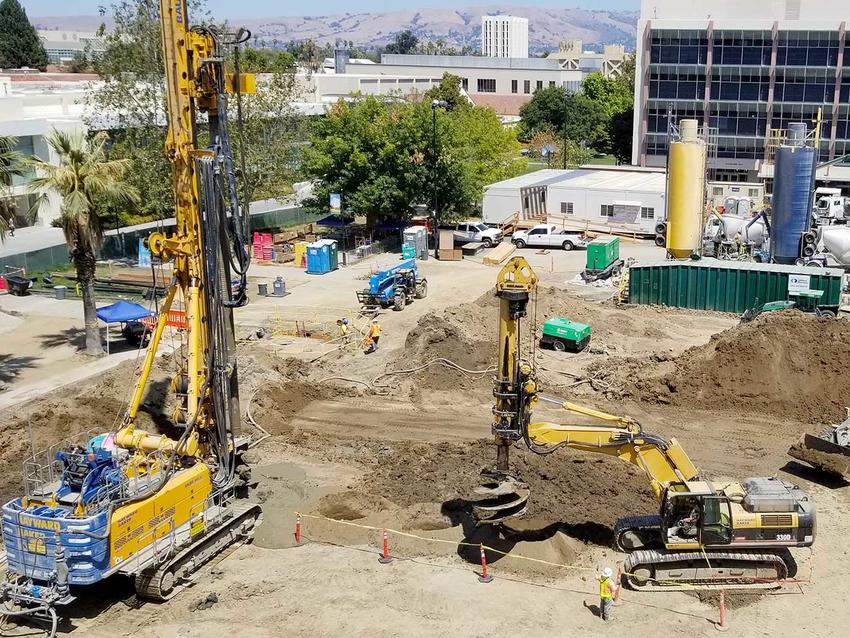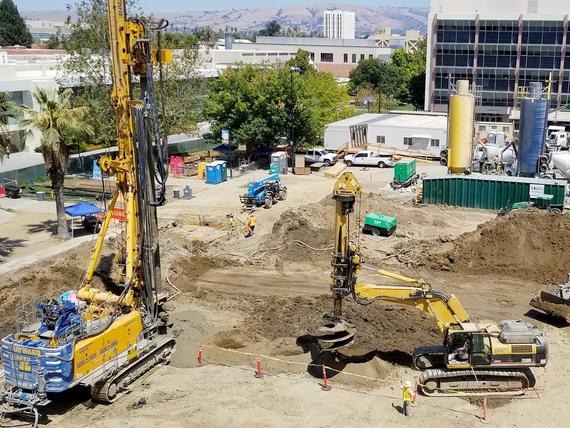Keller performed dry soil mixing to allow for the construction of the Interdisciplinary Science Building on the San Jose State University campus.

The project
Construction of the Interdisciplinary Science Building on the San Jose State University campus is the first stage in the development of a state-of-the-art Science and Innovation Complex. The 8-story, 266,000 sq. ft. structure represents the College of Science’s first new building in almost 50 years and will feature integrated learning and research spaces.
The challenge
The geotechnical investigation revealed subsurface conditions generally consisting of soft to stiff lean clay, with a 10-ft layer of very loose to loose silty sand present at approximately 19 ft below existing grade. Groundwater was observed at a depth between 12 and 18 ft below grade. The site is located within a seismically active region. The geotechnical engineer’s analyses indicated that the granular soil layer had the potential to liquefy during a seismic event. The static settlement was also a concern due to the soft ground conditions where column and wall loads for the new building were moderate to high. The project was also fast-tracked after multiple delays due to the discovery of contaminated soils which required excavation and removal prior to any foundation work.
The solution
Stone columns were originally specified to alleviate liquefaction and static settlement concerns. However, the soft soils were unlikely to provide adequate confinement to prevent bulging of the stone columns. Keller offered an alternative of soilcrete columns that would meet the project requirements of an allowable footing bearing pressure of 4000 psf, the allowable total combined seismic and long-term static settlement of 2.0 in., and allowable static and seismic differential settlement of 1.0 in. over a 40 ft span.
Soilcrete columns, created by mechanical soil mixing, were installed throughout the building footprint to depths of between 26 and 31 ft. Product verification methods included testing of five specified full-length core samples and wet grab samples retrieved daily. In close cooperation with the Project Team, Keller developed the optimal approach to the work sequence and equipment movement on the tight site. The work was completed 19 days ahead of schedule.
